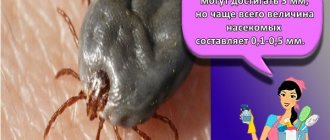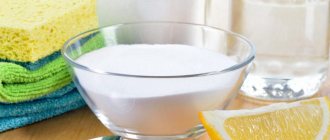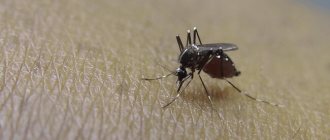Vinegar is very common and is found in almost every home. It is actively used in cooking and at the same time is an excellent disinfectant and cleanser. Today we will talk about the cleaning properties and how to get rid of the smell of vinegar after cleaning. It is used to clean furniture, clothes, shoes and other things. But a significant disadvantage is the smell that remains after use. It is quite specific and stable. No one wants to wear clothes that smell like vinegar. We will tell you how to remove this aroma from things and your apartment.
Nature of smell
Vinegar has a rather strong specific aroma due to the fact that the substance is obtained with the help of acetic acid bacteria from alcohol-containing raw materials through microbiological synthesis. Due to the fact that the product contains acetic acid, it is often used not only in cooking, but also to eliminate unpleasant odors and remove stains. Vinegar is often used as a disinfectant, as it can eliminate a large number of pathogenic microorganisms.
The only drawback of the product is that when used in large quantities, a pungent odor appears in the apartment, which is difficult to remove. If vinegar gets on things, sometimes it takes more than one wash to get rid of the obsessive aroma.
Air conditioner
The source of the unpleasant odor can be a regular car air conditioner. Its main working element is the heat exchanger, on the evaporator of which condensate accumulates and stagnates in hot weather. Dirt that gets inside the device along with moisture creates a favorable environment for the proliferation of microorganisms and molds.
In addition, mold can appear in the cabin due to a clogged air conditioner air filter. Practice shows that drivers rarely change this element in a timely manner, since such a replacement is quite expensive.
How to remove bad odor from air conditioner
To clean the air conditioner, several types of industrial antiseptics are used:
How to clean indoors
If vinegar was used for cleaning or disinfection, or accidentally spilled on the floor, then getting rid of the smell in the room will not be difficult. First you need to ventilate the room, and if this does not help, then additionally carry out wet cleaning using household chemicals.
Ventilation
Getting the smell of vinegar out of a room can be difficult, especially if a lot of the product has been spilled or used. To make the smell go away faster, you need to create a draft by opening windows, interior and entrance doors. Depending on the intensity of the aroma, airing can last 2-4 hours.
If success was not achieved at one time, then the procedure is repeated after some time.
Wet cleaning
Wet cleaning will help neutralize the obsessive odor. To do this, fill a bucket with warm water and add a little dishwashing detergent with a pleasant aroma. The floors in the apartment are thoroughly washed and allowed to dry. If necessary, repeat the procedure.
See also
TOP 25 ways to get rid of the smell of white spirit
Instead of detergent, you can add a little of your favorite essential oil to the water, it will help reduce the unpleasant aroma.
Soda and salt
Baking soda and salt absorb foreign odors well, so in a room where there is a strong smell of vinegar, you need to place open containers with these products. This method is one of the most effective, and the adsorbents should be changed every 2 days to better eliminate unpleasant odors.
What can I do to stop the smell in my washing machine?
If you don't want to clean your car too often, try preventing odors. There are several ways Why Your Washing Machine Smells - And How To Clean It / Reviewed to do this.
Choose the right washing powder
Let's repeat: front-loading machines can't handle large amounts of foam. Select an automatic washing powder and read the instructions for it. Manufacturers usually indicate how much detergent is needed per cycle.
Keep the drum dry
A closed and damp machine is an ideal environment for bacteria to grow. Therefore, immediately after washing you need to take out the laundry. Keep the drum and powder tray open. This way the equipment will dry faster. If possible, install a fan or dehumidifier in the room.
Clean the rubber cuff regularly
The right powder does not guarantee that the seal will not have deposits that cause mold to appear. Therefore, after each wash, you need to remove any stuck debris from the folds of the cuff, and then wipe the rubber with a dry cloth. Once a month you can use a solution of vinegar and water.
Eliminating odor from shoes
In this case, it is important to consider what the shoes are made of and select the necessary cleaning method accordingly. Most often, ammonia or salt are used to eliminate the smell of vinegar.
Ammonia solution
This method is suitable for leather and suede shoes. A small rag should be moistened with ammonia, and then the product should be treated inside and out. Then the shoes are additionally wiped with a damp sponge soaked in water and set out to dry.
Salt
The simplest method. Coarse salt should be poured into foul-smelling shoes and left for a day. If the method does not give the expected result, then the manipulation is repeated. After this, the salt must be thoroughly shaken out of the shoes.
In the case of canvas sneakers or ballet flats, you should wash them in a washing machine using powder and conditioner, and then put them on an intensive rinse cycle.
Video
What happens if you drink white? Watch a video about the dangerous effects of chlorine-containing products.
So we salt a cooked dish, taste it - and we hardly suspect that we are adding... chlorine to the food.
Well, not in its pure form, of course, but in the form of sodium salt of hydrochloric acid. Chemists named this derivative sodium chloride, or sodium chloride, and in everyday life it is known as table (or rock, or table) salt, and it contains more than 60% chlorine.
How to remove stink from carpets and furniture
There are several ways to clean your sofa and carpets from unpleasant odors:
- A solution of washing powder and ammonia. For 5 liters of water take 2 tbsp. l. powder or detergent for washing woolen products, 1 tbsp. l. ammonia and mix thoroughly. The resulting composition is used to treat foul-smelling areas of sofas and carpets, and then wipe these areas with a wet cloth. It is important to ensure that the products do not get wet. The final stage is drying wet spots using a hairdryer or vacuum cleaner.
- Soda. Vinegar stains are covered with baking soda and left to act for several hours, after which the powder is removed with a vacuum cleaner.
Some housewives like to use dishwashing detergent. It is applied to a sponge in a small amount, foamed, and then treated with a foul-smelling area. The foam is removed with a damp cloth and the products are dried using a hairdryer.
See also
How to quickly remove unpleasant odor from a microwave, 20 remedies
Steps
Getting rid of the smell
- Neutralize the smell of chlorine with household acids.
Neutralize the chemicals in bleach using foods that are high in natural acids. Mixing edible liquid acid with bleach can balance the overall acidity and eliminate unpleasant odors. Use any of the following options:
- Lemon, lime, orange, or grapefruit juice (any citrus fruit will do, really).
- Tomatoes (tomato sauce, puree or paste also work great).
- Cover your hands with juice or vinegar.
Rub thoroughly. It's best to do this for at least a minute to cover all areas of your hands. This will also allow the liquid to soak in and eliminate the chlorine smell.
Wash your hands in cool water.
And, lo and behold! The smell has evaporated favorably.
If the smell remains, wet your hands.
If washing your hands doesn't work, or for some reason you don't want to use plain water, dilute the water with a food product that contains an acid. in a 1:1 ratio. Then leave your hands to soak in this mixture for 2-3 minutes.
Make an exfoliating scrub from household products.
Mixing bleach and a high-acid dry food product can balance the overall acidity and eliminate odors. Use one of the following dry acids:
- baking soda;
coffee grounds.
Take the ingredient of your choice and simply rub it all over your hands. Take your time and scrub thoroughly for one minute, as if you were using an exfoliating scrub. Throw excess into the trash or rinse with hot water. This way the substance will penetrate deeply into the pores. If you don't like the smell of coffee, you can certainly use baking soda.
Moisturizes and eliminates odor at the same time
- Use selected natural oils, lotions and soaps.
Often, natural products and herbal oils have a magical aroma. In addition, they moisturize the skin. Considering that chlorine, on the contrary, dries out the skin, this is a win-win option - you will moisturize the skin and get rid of the unpleasant odor. Here's what you can use:
- Coconut oil.
Almond oil.
It's important not to overdo it when it comes to oils. You probably don't want to add unnecessary hassle to yourself by overdoing it with oil, otherwise you'll have to remove the excess.
Squeeze out a few large drops.
If you choose lotion, it will be enough to completely cover your hands with it. This way you will understand whether the product you choose helps get rid of the chlorine smell and whether you need to apply more.
Lather your hands.
If you are using citrus-based soap, lather your hands and then rinse them thoroughly under hot water. This way the soap will pick up the chlorine molecules and release them.
We use flowers, plants and herbs
- Choose essential oils.
From a huge variety of oils, you can choose the one you like best. Never apply essential oils directly to the skin, as they are generally too strong to be applied directly. Dilute the essential oil with a so-called carrier oil and apply as needed. Here are examples of essential oils:
- lemon;
eucalyptus;
For example:
- sweet almond oil;
hemp seed;
A good proportion is a 2% solution: approximately 1 drop of essential oil per 28 grams of base oil.
Find the most fragrant flowers or herbs in your garden or buy them at the store. Then rub the petals or leaves on your fingers and hands to extract the fragrant oils. Use the petals of the following plants:
- rose;
geranium;
- If desired, you can cut the lemon into slices and rub your hands with them.
- Wear rubber gloves when handling bleach (especially those containing chlorine). This will solve the problem before it even occurs. Remember, it is easier to prevent a disease than to treat it later.
- Before you begin to remove the odor, wash your hands with cold water. Contrary to popular belief, it is better to wash your hands with cold water, since hot water opens the pores and chlorine molecules penetrate into them even deeper. Cold water tightens the pores and makes it easier to remove odor from your hands.
- When it comes to acid, remember a simple rule: if you can't eat it, don't use it. Food grade acids can seriously damage the skin on your hands.
- Check for burrs, cuts, etc. If any, do not use acidic products. There won't be any severe pain (if the wound is small), but it's still not worth the risk.
- You can either mix baking soda with water or not - the effect will be the same.
- Milk is famous for eliminating the odor of fish and other foods. You can try it too.
- Some people recommend using mint toothpaste as an alternative.
During the Soviet Union, when there was no such abundance of detergents as we are accustomed to, housewives used a universal liquid - Whiteness. It was used for all occasions: for bleaching fabrics, washing tiles, washbasins and bathtubs, and cleaning toilets. The entire entrance knew in which apartment the laundry was boiled. After all, Whiteness is a chlorine-containing chemical.
Whiteness is a popular means for bleaching and disinfection.
Times have passed, but good old Whiteness still gives a head start to new chemicals. Of course, delicate fabrics are treated with new detergents. But Whiteness for disinfection is what you need!
What to do with clothes
If vinegar was used to remove stains, then there is a high probability that after using it, the clothes will emit an unpleasant aroma. Washing in a machine, baking soda and ammonia will help get rid of the obsessive smell.
In the washing machine
If the aroma is not very pronounced, then it is enough to wash the odorous item using powder and fabric softener with a pleasant smell. In this case, it is recommended to set the double rinse program.
The washing mode is selected based on the composition of the fabric, but this method is best suited for thick synthetic or cotton items.
Ammonia
This product is ideal for delicate fabrics. A little ammonia is diluted in a large amount of water, bad-smelling clothes are placed in the resulting solution and left for half an hour. After this, the items are rinsed in clean water and hung to dry in the fresh air.
Soda
You need to prepare a saturated water-soda solution and immerse things in it for no more than half an hour, then rinse thoroughly in plenty of water and hang to dry. It is important to remember that ammonia and baking soda should be used with caution when washing synthetic items, as such clothing may fade and become faded.
A few words about the substance
This important macroelement is found not only in salts, but also in human organs, actively participating in metabolic processes. When we hear the common expression “acid-base balance,” we must understand: this is nothing more than the exchange of potassium, sodium and chlorine within the body.
Bones, blood, and intercellular fluid necessarily contain these components, and if this balance is disturbed, the person will experience some kind of illness. As for the “chlorine” metabolism, its disruption leads to interruptions in the functioning of the heart, pressure surges, and swelling.
- Other researchers believe that the percentage of illnesses caused by drinking non-chlorinated water is much higher.
- Still others argue that it is not chlorine dissolved in water that is much more harmful, but its vapors, in high concentrations, are simply dangerous, because can seriously disrupt the functioning of the respiratory and digestive organs.
In any case, knowing about the beneficial properties of chlorine, we can conclude: in order to maintain health, you need to control the doses of this macronutrient when in contact with it.
Removing odor from hands
After cooking or cleaning, an intrusive aroma of vinegar is often felt on the skin of the hands, which ordinary salt will help remove. It is necessary to pour a little substance into a container with warm water to form a solution, put your hands in it for about 3-5 minutes. After this, rinse the skin under running water.
It is important to remember that salt has a drying effect, so after the procedure it is recommended to apply a nourishing cream to the skin. This method will not work if you have cuts or scratches on your hands.
Lemon will help you!
No matter how much you protect your hands, the chlorine smell still lingers on your skin for a long time. How to remove it? It is necessary to use neutralizers of natural origin.
- Experts advise making the following bath: drop a few drops of lemon juice into heated water and soak your hands in this solution for about a quarter of an hour.
- You can also make a hand bath with ammonia.
- A bath of an aqueous solution of table or apple cider vinegar will also remove the smell - a couple of tablespoons in a bowl of warm water.
After “acid” baths, hands should be wiped dry with a soft napkin or towel and certainly lubricated with nourishing cream.
Oddly enough, many people like the smell of bleach, and they specifically “include” chlorine-containing preparations in the cleaning process. Well, as they say, it depends on the taste and color... For those who have not yet acquired new household chemicals without chlorine, we recommend using the methods described above.
Many people are accustomed to using cleaning and disinfection products containing chlorine. Thinking about its benefits and harms, whether you like it or not, you return to the question of how to remove its suffocating smell.
Surprisingly the smell wasn't blocked after painting! Moreover, you probably applied paint to an already dry and treated surface. Perhaps, when treating with a chlorine-containing agent, some of it fell on the wooden surface of the floor in the form of drops and was absorbed? Carefully inspect all objects adjacent to the treated area. Wash it well or even throw it away. which received antifungal treatment. Check that you have properly sealed the containers in which the treatment product is stored if they remain in the apartment. Usually, one intensive ventilation is enough to get rid of the smell of chlorine. Do not under any circumstances try to “drown out” the smell with strong deodorant fresheners. This will only make things worse. Try treating all surfaces in the apartment with a weak solution of potassium permanganate. Pay special attention to the suspected source of the odor. Place saucers with salt, soda or rice grains around the apartment. They are all excellent odor absorbers and have excellent absorption properties. You can add a drop of some essential oil to the saucers until the smell of bleach disappears completely.
Kind. Let's start with the fact that in this case you acted a little differently than what should be done when treating surfaces with products containing a high chlorine content. First, the room should be thoroughly ventilated for several days until the smell disappeared, and only then covered with primer and paint. This is what we did when we treated the ceiling of the balcony from the fungus that had appeared on it. Of course, with regular long-term ventilation of the room, the smell of bleach will disappear over time, but this process can be accelerated. The easiest way is to take table salt, fill half a tea mug with it and place it in each room. Salt perfectly absorbs any odors. Soda has the same properties, here they are interchangeable. The salt in the mug should be changed at least once a day, the used salt should be thrown in the trash and immediately put in the trash, I think this doesn’t need much explanation. A weak solution of potassium permanganate has the same properties. If you decide to act immediately to the maximum, buy sodium hyposulfite (it’s called antichlorine), dissolve its crystals in water in a ratio of approximately 1:3 and wipe the surfaces (walls, ceiling, etc.) in the areas where the product was treated. Or you can immediately buy a ready-made solution. But I say again, in any case, ventilate the room well. The more you ventilate, the faster the smell will disappear. Good luck.
Yes, of course, your big mistake was to apply a primer to the walls immediately after treating with chlorine-containing products. I didn’t have the problem that the whole apartment stank of bleach. But in the bathroom and toilet I had to fight black fungus. Luckily we have a hood. While the repairs were going on, we almost didn’t turn it off and the smell of harmful bleach quickly disappeared. In less than a week. You need to continue to ventilate the apartment. There is no way out and you need to be patient and use all methods to eliminate the chlorine smell. The most appropriate thing here would be absorbent substances, as previous commentators advised you. Not only soda, salt and rice, but also activated carbon have good absorbent properties. It may be appropriate to use aroma lamps with essential oils of lavender and pine. They say you shouldn't use air fresheners. Yes it is. But there are air purifiers. I would not recommend buying them in simple household chemical stores. You need to contact a consultant (distributor) of some network company. They definitely have something to offer you. And don’t forget (!) you need an air purifier. Nowadays, network companies often produce high-quality cleaners for residential premises, which not only do not harm people, but also perfectly kill unpleasant odors. Good luck to you! Write how you got rid of the foul odor!
Hello, yes, your situation is certainly not an enviable one, I remember I also encountered this, when I stupidly treated everything with bleach and painted over it, and in the end I got a thermonuclear mixture of the smell of paint + chlorine. It was truly impossible to stay at home, the only thing that helped was ventilation; when the paint dried, the smell gradually dissolved by itself, it took more than a week and a half. By the way, help in the form of table salt is recommended above, but I still think it’s unlikely to be possible to get rid of the smell 100% using the above method. Now you only need to wait for it to dry, this is done, as I noted above, by airing, there is no other way, besides, you first treated it with chlorine, sealed it with a primer, and also paint, I’m afraid that this whole “cake” will take a long time to dry. There is also another way, if you have potassium permanganate, then make a weak solution and wipe the surface where it was previously treated with chlorine, manganese kills odors, you can also put a manganese solution in the room. True, you still have to ventilate everything, so open the windows, turn on the hood if you have one, and wait for it to dry completely, while wiping it with manganese.
I want to say right away that I don’t understand why you should take mold repellents that contain chlorine. You understand, it is simply impossible to live in this apartment for several days after treatment. It will hurt your eyes. Allergies may occur. Today there are a lot of mold repellents that are completely odorless. They are effective, just like with the smell. But if you have already made a mistake and understand that there is no turning back, then my advice to you. Go for a walk, at least for a couple of hours. The apartment must be ventilated. The bleach should slowly dissipate. It’s cool to actually make a draft. Then, when you get home, dilute your regular fabric softener in water. It's best to take something for children. You know, so that there is no strong aroma. Baby mouthwashes smell gentle. In a few hours, your walls that have been treated with the product will already dry out, so you can safely take a small sponge and treat the walls again, but with a fragrant product. After this, you can no longer leave home. The bleach will begin to disappear faster and faster. But in general, ideally, leave the draft for another couple of hours. If there are no children in the house, don’t be lazy, do it. And it will be easier for you, and the walls will dry several times faster.
Ekaterina, tell me how long it took and how did you manage to remove the smell? I also encountered the same problem, I treated the wall with a mold remover containing chlorine, ventilated it for a week, wiped the walls with a soda solution, but the walls still reeked of bleach.
The market is overflowing with household chemicals that do not contain chlorine-containing components, however, experienced housewives remain faithful to their usual products. But it’s no secret that chlorine has a negative effect on a person’s well-being, so you need to know how to get rid of the smell of bleach yourself.
Using professional products
If the smell of vinegar is very persistent and cannot be eliminated with improvised means, then you should pay attention to professional household chemicals. Below is information about the most effective and popular odor neutralizers. All of them are simply applied, and the effect after their use occurs immediately.
Christal
These are special salt crystals from various manufacturers, which are designed to eliminate unpleasant odors in refrigerators and rooms. The product is simple to use - it is placed in places with the strongest aroma of vinegar. The crystal should remain in the chosen place until the smell completely goes away.
See also
TOP 18 ways to remove the smell of vomit from the sofa at home
Multi
Urine Off Multi-Purpose is an organic odor remover. Available in spray form and can be used to treat furniture, carpets, shoes, clothing, wood, tiles and other types of coatings.
Allergy Free
PIP Allergy Free is a room microflora stabilizer that is recommended for use by allergy sufferers. The product can be used to process any materials; it completely eliminates unpleasant odors of organic origin.
Magos Dream JSC
A liquid product designed to eliminate unpleasant odors in any type of premises. You can use either a concentrated product or prepare a solution in a ratio of 1:5 to 1:20 by mixing with water. After this, the drug is poured into a container with a sprayer and rooms with an unpleasant odor are treated.
OdorGone Animal Gold
This product is designed to eliminate pet odors, but can be used successfully to combat vinegar odors. The product is sprayed onto the foul-smelling surface and allowed to absorb.
Despite the fact that the products described above are made on the basis of safe and highly effective ingredients, when using them you must strictly follow the instructions and avoid contact with the skin and mucous membranes.
Where does the bad smell come from?
It may seem that finding the source of the odor is not so difficult, but in reality, car owners often feel helpless even after they have examined and sniffed every corner of the cabin. This happens because the unpleasant odor quickly spreads beyond the pollution itself and permeates the entire interior: if the pollution itself is not obvious, then you can look for this speck or a rolled-up piece of food for an infinitely long time. We suggest that you familiarize yourself with the most popular causes of unpleasant odors in the cabin and speed up the search for the culprit.
The smell of a drink spilled behind a seat or a piece of burger meat rolling into a hard-to-reach corner can turn into a persistent unpleasant aroma that will haunt you day after day. Some odors can be easily removed with light cleaning and long airing, but this trick will not work with all stains. The worst things in this regard are rotten fish or meat, dairy products and beer or kvass. Here you can also record the urine of animals or children, as well as vomiting during motion sickness. These odors, if they have not been eliminated in time and have been absorbed into the upholstery, will categorically refuse to leave it without thorough cleaning.
Tips and tricks
To ensure that cleaning using vinegar goes as smoothly as possible, and then you don’t have to ventilate the room for a long time, it’s worth remembering the following tricks:
- do not exceed the dosage of the product when cleaning;
- Screw the cap of the vinegar bottle carefully after use;
- do not leave the product for prolonged exposure on clothing or objects;
- after using on any surfaces, be sure to rinse them with plenty of water until the smell of vinegar becomes barely perceptible;
- Use gloves when preparing dishes with vinegar.
The tricks described above will help reduce the effects of cooking or cleaning with vinegar, and you won’t have to additionally treat your clothes or apartment with improvised means to eliminate the unpleasant odor. Despite the fact that vinegar has a strong and persistent aroma, removing it from things or from a room is not difficult.
If the desired effect could not be achieved using improvised means, then you need to pay attention to professional household chemicals.
Share link:
How to eliminate the smell of fish in the car interior: classification of products
As my grandmother taught me: potassium permanganate.
If it doesn’t remove the stench, it will definitely disinfect it. You'll have to remember how to prepare the solution. After this, you should treat the contaminated area with it. Recommended for use on dark surfaces only.
Car dry cleaning
: how to remove the smell of herring from a car if you don’t have time for experiments and have finances. It is enough to contact one of the services where specialists will treat the interior with dry fog. Among the disadvantages of the method, one can highlight the high cost of the procedure.











